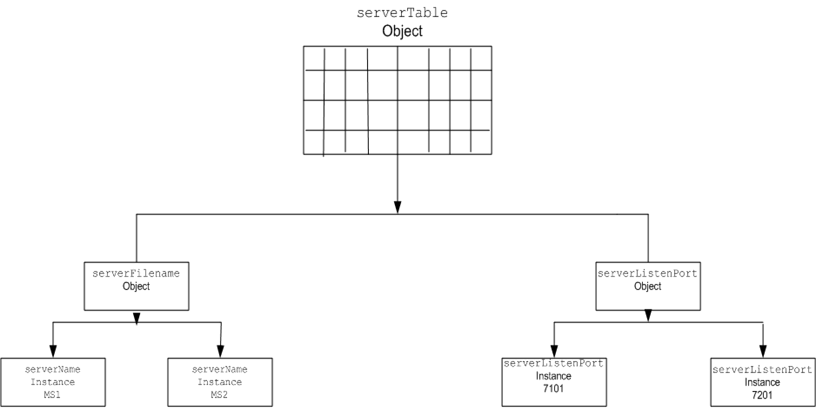







|
Simple Network Management Protocol (SNMP) is an application-layer protocol that allows the exchange of information on the management of a resource across a network. It enables you to monitor a resource and if required, take some action based on the data obtained from the resource. Both the SNMP version 1 and SNMP version 2 are supported by ALSB. SNMP is made up of the following components:
This is the resource that is being monitored. The resource and its attributes are added to the Management Information Base (MIB).
The MIB is a data structure that stores all the resources to be monitored in an hierarchical manner. It also stores the attributes of the resources. Each resource is given a unique identifier called the Object Identifier (OID). You can use the SNMP commands to retrieve the information on the management of a resource. The following section gives an illustration of the WebLogic Server MIB.
The Weblogic Server installer creates a copy of the MIB in the following location:
<BEA_HOME>/wlserver_10.0/server/lib/BEA-WEBLOGIC-MIB.asn1
where <BEA_HOME> is the directory in which you installed WebLogic Server. WebLogic Server exposes thousands of data points in its management system. To organize this data it provides a hierarchical data model that reflects the collection of services and resources that are available in a domain. Figure A-1 illustrates the hierarchy of objects in the MIB.

For example, if you created two managed servers, MS1 and MS2, in a domain, then MIB contains one object serverTable, which in turn contains one serverName object.The serverName object in turn contains two instances containing values MS1 and MS2. The MIB assigns a unique number called an object identifier (OID) to each managed object. Once assigned you cannot change the OID. Each OID consists of a sequence of integers. This sequence defines the location of the object in the MIB tree. Each node in the path has both a number and a name associated with it.
For more information about WebLogic Server MIBs, see WebLogic Server documentation at WebLogic Server® 10.0 MIB Reference.
Each managed resource uses an SNMP agent to update the relevant information in the MIB. For this you should configure the SNMP agent to detect certain conditions within a managed resource and send trap notifications (reports) to the SNMP manager. You can configure the SNMP agent to generate traps in one of the following ways:
The SNMP manager controls the SNMP agents. It is also the primary interface to the Network Management System.
The Network Management System forms the interface with the user. It gathers data using the SNMP manager and presents it to the user.


|